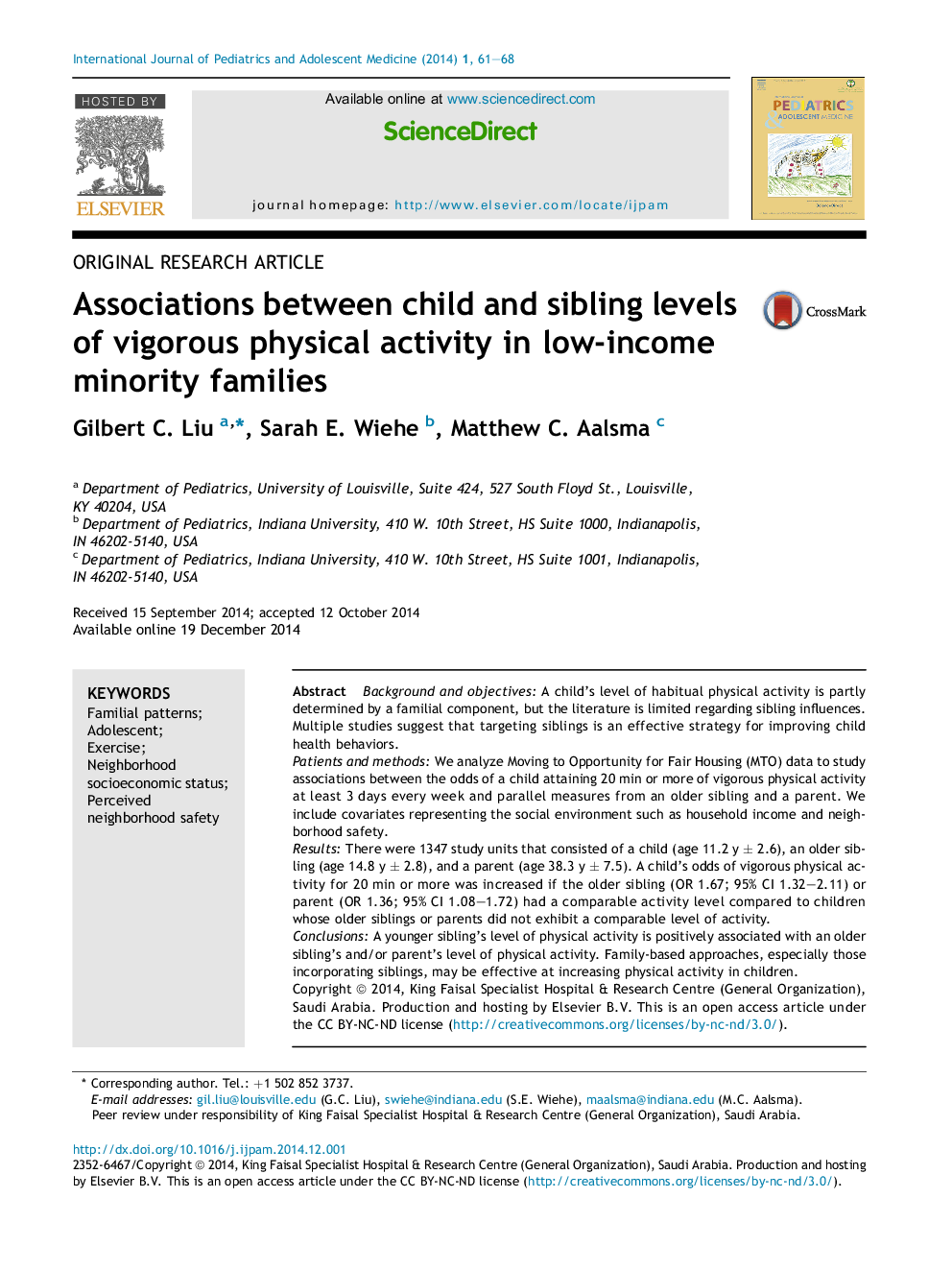| کد مقاله | کد نشریه | سال انتشار | مقاله انگلیسی | نسخه تمام متن |
|---|---|---|---|---|
| 4153694 | 1607050 | 2014 | 8 صفحه PDF | دانلود رایگان |
Background and objectivesA child's level of habitual physical activity is partly determined by a familial component, but the literature is limited regarding sibling influences. Multiple studies suggest that targeting siblings is an effective strategy for improving child health behaviors.Patients and methodsWe analyze Moving to Opportunity for Fair Housing (MTO) data to study associations between the odds of a child attaining 20 min or more of vigorous physical activity at least 3 days every week and parallel measures from an older sibling and a parent. We include covariates representing the social environment such as household income and neighborhood safety.ResultsThere were 1347 study units that consisted of a child (age 11.2 y ± 2.6), an older sibling (age 14.8 y ± 2.8), and a parent (age 38.3 y ± 7.5). A child's odds of vigorous physical activity for 20 min or more was increased if the older sibling (OR 1.67; 95% CI 1.32–2.11) or parent (OR 1.36; 95% CI 1.08–1.72) had a comparable activity level compared to children whose older siblings or parents did not exhibit a comparable level of activity.ConclusionsA younger sibling's level of physical activity is positively associated with an older sibling's and/or parent's level of physical activity. Family-based approaches, especially those incorporating siblings, may be effective at increasing physical activity in children.
Journal: International Journal of Pediatrics and Adolescent Medicine - Volume 1, Issue 2, December 2014, Pages 61–68
